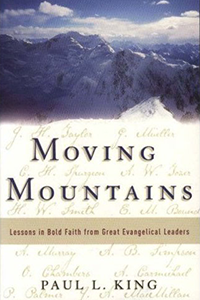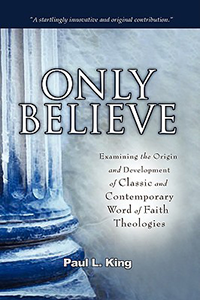“Let your moderation be known to all” (Phil. 4:5).
“No longer tossed to and fro, and carried about by every wind of doctrine. . .” (Eph. 4:14).
When a tire is out of balance, our car shakes and shimmies. The same is true about our life and biblical truth. The nature of truth is elliptical, that is, truth tends to revolve around distinct polarities (e.g., God’s sovereignty vs. man’s free will). Neither pole possesses the totality of truth. Rather, a divinely-designed dynamic tension exists between the two focal points. A.W. Tozer explains it in the motto, “Truth has two wings.” Both wings are needed to make truth fly properly:
“Truth is like a bird; it cannot fly on one wing.
The second text must be placed over against the first
to balance it and give it symmetry,
just as the right wing must work with the left
to balance the bird and enable it to fly.
Truth has two wings.”
He gives the example of Jesus’ temptation in the wilderness. Satan told Jesus to throw Himself off the pinnacle of the temple, quoting Scripture from Psalm 91, that the angels would protect Him. Jesus replied, “Again it is written, you shall not tempt the Lord your God.” Tozer notes, “The whole truth does not lie in ‘It is written,’ but in ‘It is written’ and ‘Again it is written.’”
Rather than a contradiction, the seeming paradoxes are really the two wings of truth, two sides of the same coin. We see this in many of Jesus’ teachings: we must lose our life to save it; a grain of wheat must die to bear fruit, and so on. A.J. Gordon, the 19th century Baptist pastor who founded Gordon College and Gordon-Conwell Seminary, cited William Lincoln’s insightful commentary on the need for balancing polarities of truth:
“The only way for a believer, if he wants to go rightly, is to remember that truth is always two-sided. If there is any truth that the Holy Ghost has impressed upon your heart, if you do not want to push it to the extreme, ask what is the counter-truth, and lean a little of your weight upon that; otherwise, if you bear so very much on one side of the truth, there is a danger of pushing it into a heresy. Heresy means selected truth; it does not mean error: heresy and error are very different things. Heresy is truth; but truth pushed into undue importance to the disparagement of the truth on the other side.”
Certain teachings and their critics represent contra-polarities. Each holds elements of truth, but also elements of error, and thus each breaks the dynamic tension between the focal points of truth. Often it is not a case of “either-or,” but rather “both-and,” as Gordon expressed the dynamic tension: “Because we find both sides of this truth distinctly expressed in Scripture, we must be sure to emphasize both.”
Gordon’s contemporary, Charles Spurgeon, likewise wrote, “The man believes one doctrine, perhaps, and that is so delightful that it swallows up every other. Then he gets hold of another, and he swings that way like a pendulum; no doctrine can be true but that one. Perhaps in a little time he swings back like a pendulum the other way. He is unsteady because, while his faith perceives the truth, it does not perceive the harmonies of truth. He is half-blind, and cannot see far.” Tozer gives us sound counsel for such issues today:
“Many of the doctrinal divisions among churches are the result of a blind and stubborn insistence that truth has but one wing. Each side holds tenaciously to one text, refusing grimly to acknowledge the validity of the other. Lack of balance in the Christian life is often the direct consequence of overemphasis on certain favorite texts, with a corresponding under-emphasis on other related ones. Let’s use both wings. We’ll get farther that way.”



Leave a Reply